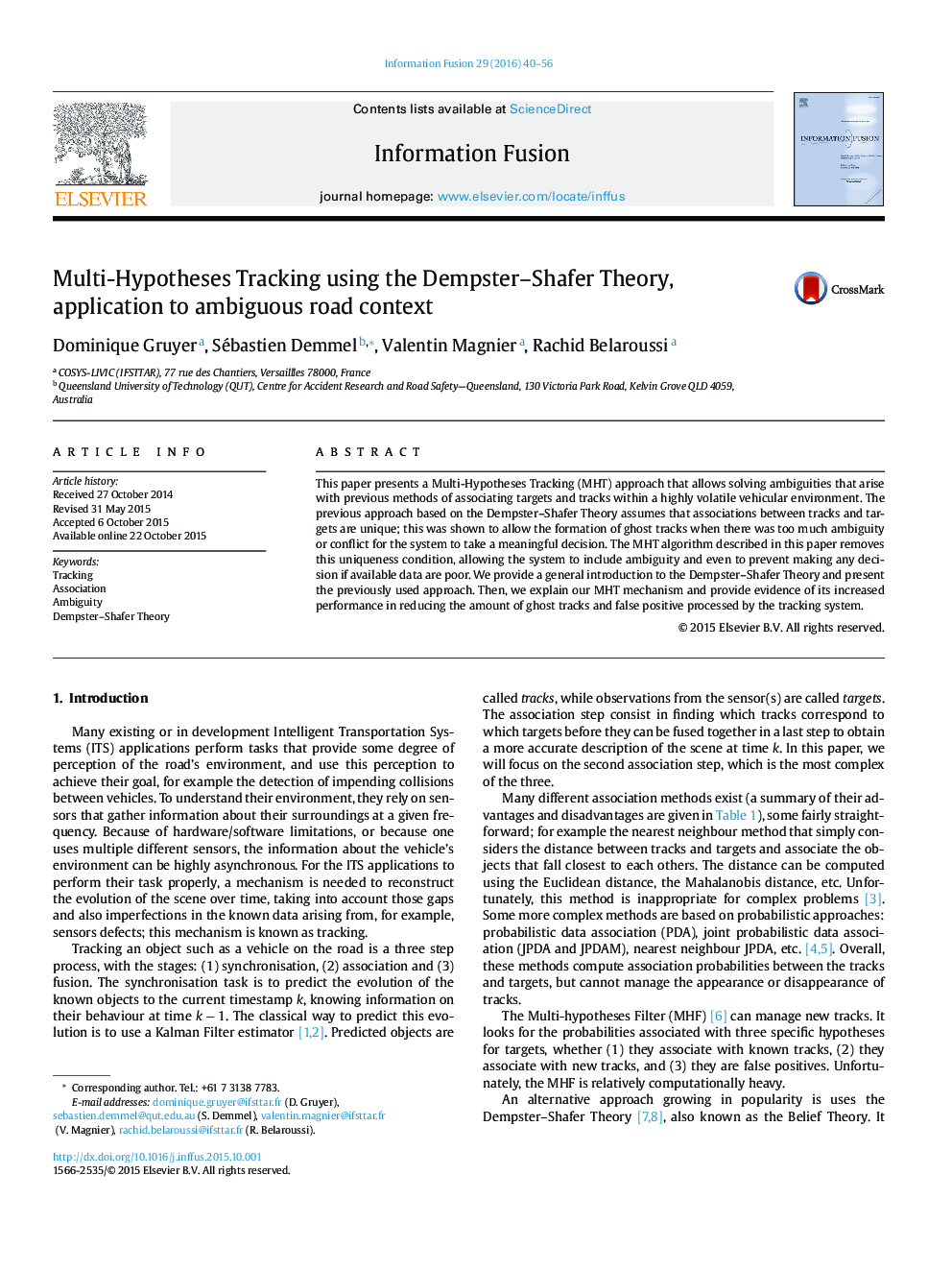| Article ID | Journal | Published Year | Pages | File Type |
|---|---|---|---|---|
| 528032 | Information Fusion | 2016 | 17 Pages |
•We develop a new method to solve ambiguities in tracks–target association in vehicular environments.•Previous work with the Dempster–Shafer theory is improved by incorporating conflictual data in a beneficial way.•Two Multi-Hypotheses Tracking methods are examined with their pro- and cons.•Ambiguity removal is demonstrated with two examples: pedestrians crossing in front of a vehicle-mounted laserscanner, and an overtaking manoeuvre.
This paper presents a Multi-Hypotheses Tracking (MHT) approach that allows solving ambiguities that arise with previous methods of associating targets and tracks within a highly volatile vehicular environment. The previous approach based on the Dempster–Shafer Theory assumes that associations between tracks and targets are unique; this was shown to allow the formation of ghost tracks when there was too much ambiguity or conflict for the system to take a meaningful decision. The MHT algorithm described in this paper removes this uniqueness condition, allowing the system to include ambiguity and even to prevent making any decision if available data are poor. We provide a general introduction to the Dempster–Shafer Theory and present the previously used approach. Then, we explain our MHT mechanism and provide evidence of its increased performance in reducing the amount of ghost tracks and false positive processed by the tracking system.
